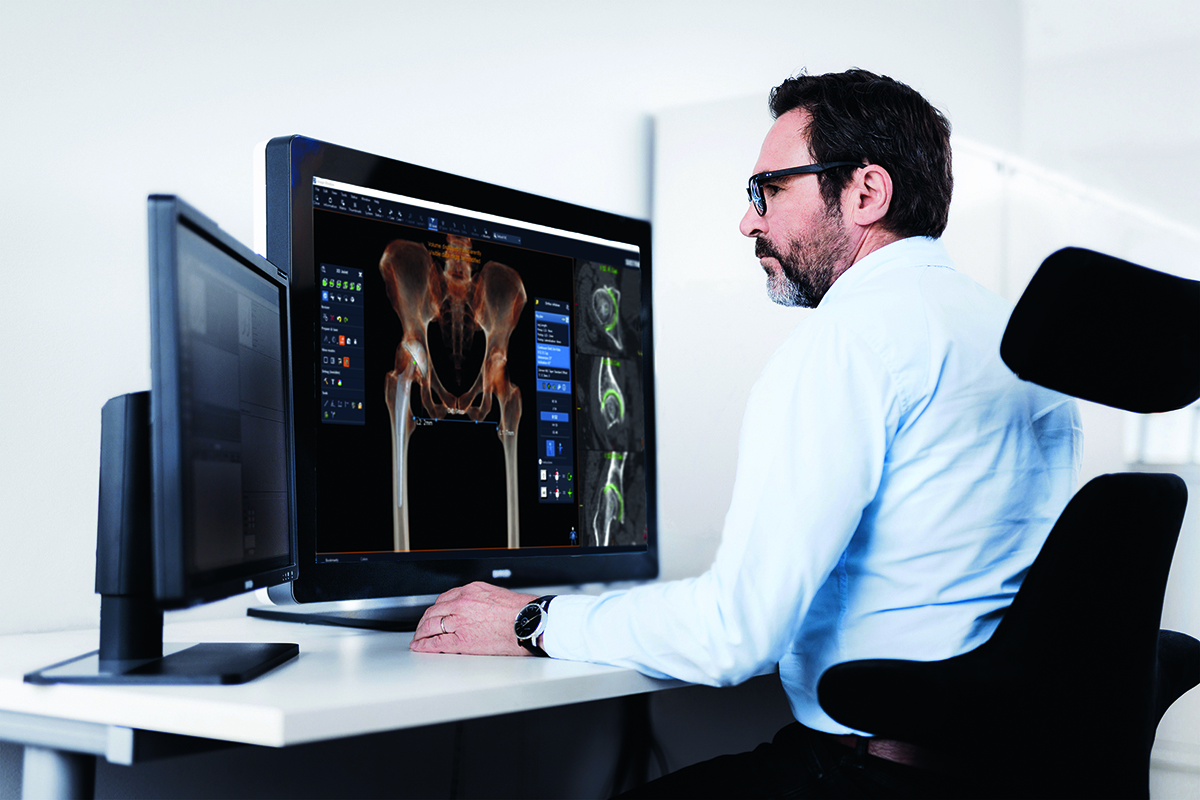Increase accuracy in joint replacement with 3D planning
Sectra’s 3D Joint Replacement solution lets surgeons easily plan complex arthroplasties. The 3D views and dedicated orthopaedic tools allow for increased accuracy in implant sizing, angle measurements and surgical approach. Surgeons can now study the patient’s anatomy, and plan for surgery, in ways that are simply not possible using today’s standard 2D images. This can ultimately lead to less time in the operating room and improved surgical outcomes.
With Sectra’s 3D Joint Replacement solution, surgeons can gain advantages that prove highly beneficial for their patients. The intuitive tools enable a quick learning curve, while template and angle measurement functions speed up the process of planning through simultaneous use of 3D and MPR views. 3D joint planning also seamlessly removes potential calibration issues and errors, as CT data visualizes true size automatically, improving accuracy in implant selection even further.
Learn more



